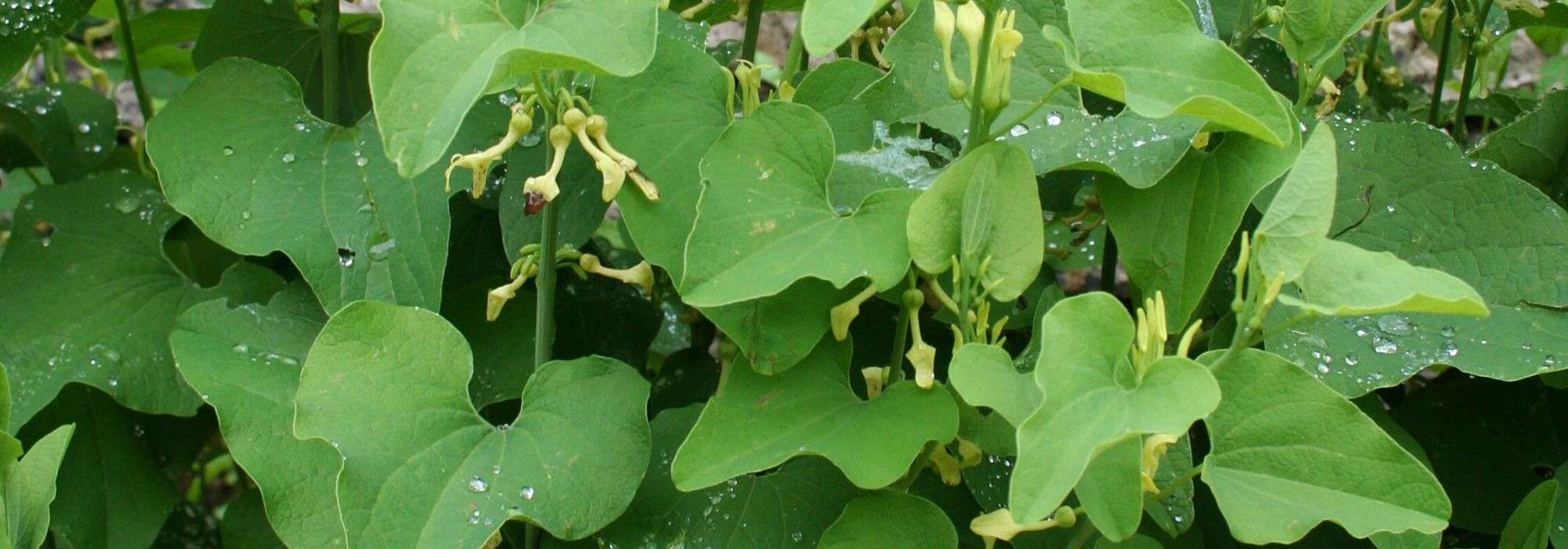
Aristolichia, Dutchman's pipe: planting, growing
Contents
Aristolochia in a nutshell
- Aristolochias are climbing shrubs with a rather exotic appearance, appreciated for their large, heart-shaped, lush leaves
- They also produce curious siphon-shaped flowers in summer, featuring plum tones accented with cream
- Some are hardy enough to survive our winters in the ground
- They thrive in any good garden soil that remains cool
- Their voluble stems create a sensational effect and transform any support
A word from our expert
Aristolochia is a climbing plant with ample and abundant foliage, valued for its ability to quickly cover walls, pergolas, or any support provided to it. This liana surprises with its spectacular foliage, lush with a distinctly exotic appearance that adorns itself with stunning hues in autumn.
This exuberant foliage conceals in summer surprising siphon-shaped flowers of a lovely dark purple speckled with cream.
There are many species, most of which are voluble. Among the most commonly cultivated are Aristolochia macrophylla (durior), a hardy species, Aristolochia clematitis, and the giant Aristolochia gigantea, as well as Aristolochia grandiflora, known for its very large flowers.
It thrives in sunny but not scorching situations or in partial shade. This voluble liana is easy to grow in mild climates, although it withstands short periods of frost, down to -10°C on average, provided it is south-facing, in well-draining soil, and mulched in winter.
Provide it with well-drained, fertile garden soil, and in colder regions, shelter it from winds that could damage its large leaves.
Discover our Aristolochias; they will bring a touch of exoticism to your garden!
Description and botany
Botanical data
- Latin name Aristolochia
- Family Aristolochiaceae
- Common name Dutchman's pipe, pipe vine, calico flower
- Flowering June to August
- Height 2 to 10 m
- Exposure Sun, partial shade
- Soil type Clayey (heavy), clay-loamy (rich and light), a cool soil
- Hardiness variable depending on species
Aristolochia is a herbaceous liana from the Aristolochiaceae family, native to South America, particularly Brazil, but it is also found in Europe and Asia. It grows spontaneously at the forest edge, in undergrowth, or along waterways. Of the approximately 300 deciduous or evergreen species, only a few are cultivated in our climates; the Large-leaved Aristolochia (Aristolochia macrophylla, syn. A. durior) or the Common Aristolochia, which is a climbing plant, the Aristolochia clematis, a non-climbing Aristolochia, or Aristolochia gigantea, the giant Aristolochia, a tropical species that only some knowledgeable gardeners in France manage to cultivate in a greenhouse or heated conservatory.
Depending on the species, Aristolochia can be a climbing or creeping perennial. The Aristolochias (macrophylla and gigantea) are fast-growing lianas that can form a beautiful bush of 5 to 8 m in all directions in just a few years. Aristolochia clematitis is closer to Asarum; it is distinguished by its creeping habit and will not exceed 2 m in height.
The stems of the climbing varieties are equipped with tendrils and corky growths that allow them to wrap around many supports (fence, wall, pergola, tree trunks). Aristolochias are characterised by their ample and lush foliage, which is their main attraction. The stems bear numerous large alternate leaves with long petioles. They are 10 to 15 cm wide, heart-shaped, pointed at the tip, strongly veined, and have undulating margins. Bright green, initially villous and later glossy, they have a glaucous and matte underside. Throughout the seasons, from bud burst to leaf fall, the foliage changes. Deciduous, it takes on magnificent fiery orange, red, and purple hues in autumn before falling.
This exuberant foliage conceals a flowering that is as exotic as it is original. From June to September, the Aristolochia reveals curious solitary flowers nestled among the foliage. These are small tubular flowers without petals, with a curved ‘S’ peduncle reminiscent of a pipe, which has earned the Aristolochia the names siphon plant or Dutch pipe. They are arranged along the branches, in the axils of the leaves, and are more or less visible and spectacular depending on the species. The giant Aristolochia displays enormous flowers over 15 cm in diameter.
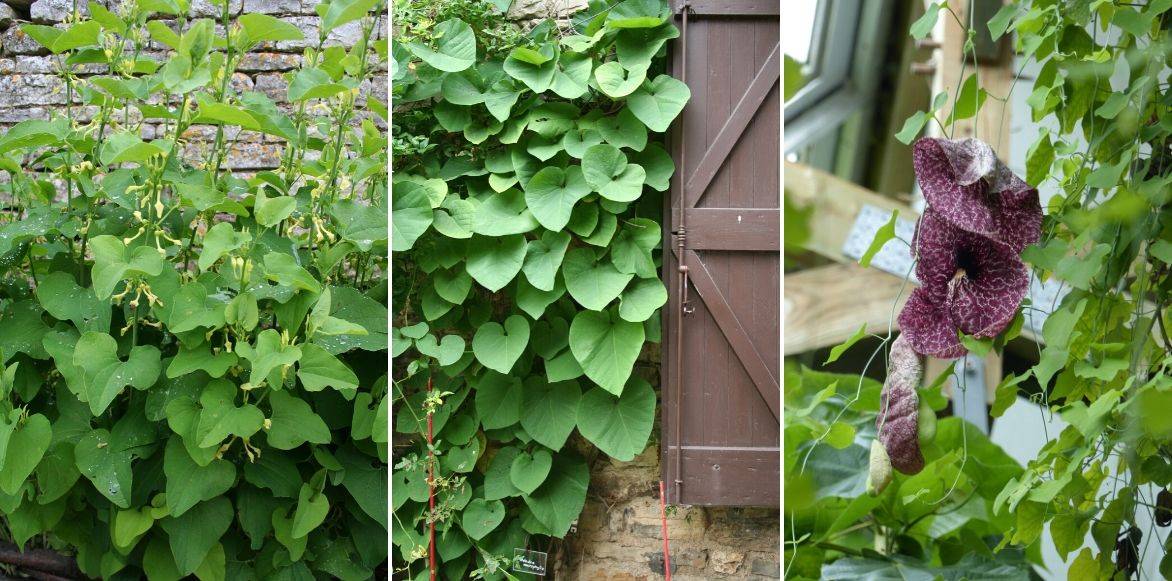 Some species of Aristolochias: A. clematitis, A. macrophylla, and A. gigantea[/caption>
Some species of Aristolochias: A. clematitis, A. macrophylla, and A. gigantea[/caption>
These small urns bloom in shades of plum, wine, yellow, and brown, sometimes speckled, veined, or striped with cream.
Some of these flowers emit a strong foul odour. All parts of the plant are toxic. Pollination by flies results in green dehiscent pods with facets that contain winged seeds; however, Aristolochias rarely produce fruit in our climates.
Hardiness varies depending on the species. The foliage is destroyed at -7°C, but the stump can withstand -10/-15°C. It grows in non-burning sun or light shade in soil that remains cool.
It is ideal for greening a wall, a fence, a tree trunk, or simply to dress up a gazebo or pergola.
“`
Main species and varieties
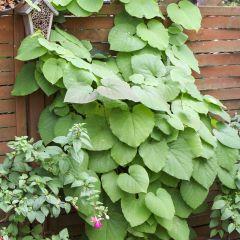
Aristolochia macrophylla
- Flowering time July, August
- Height at maturity 8 m
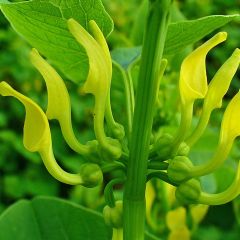
Aristolochia clematitis
- Flowering time July to September
- Height at maturity 2 m
Discover other Aristolochia
View all →Available in 1 sizes
Available in 3 sizes
Planting
Where to plant Aristolochia?
Species that are sufficiently hardy (down to -7/-10°C on average) to be grown outdoors in our gardens prefer sunny locations while avoiding the hottest hours or partial shade. In colder regions, this liana must be planted in a sheltered position facing south, along a wall well exposed and protected from icy winds. It does not like either very cold winters or dry spells.
In a sheltered position, it will regrow from the stump after potentially being damaged by frost (its foliage is destroyed at -7°C). The more tender Aristolochias (down to -1°C) will be grown year-round in a conservatory or greenhouse and placed outside in summer.
Not demanding regarding soil type, it adapts to any good garden soil that is well-drained, even calcareous, although it prefers clayey soil that is relatively rich in organic matter. It needs soil that is always moist during the driest periods of the year but never waterlogged.
Aristolochia can cover 8 to 10 m² as its roots are running: its development therefore requires space to accommodate its expansion.
In a mild climate garden, it can be used in various ways, making a good wall cover, but it can also adorn a pergola, arbor, or tree trunk. It requires support (a trellis or cables) as it cannot cling to a smooth surface on its own. Some non-climbing varieties such as Aristolochia clematitis can be grown in borders among other upright perennials.
When to plant?
Plant Aristolochia in spring, from February to April, or in early autumn in mild climates.
How to plant?
In the ground
To dress a well-exposed wall or fence, provide a solid and sufficiently large support (trellis, cables, or wall); guide its stems as they develop to help them cling.
- Dig a hole three times wider than the root ball and maintain a distance of about 40 to 50 cm from the support
- Place the plant in the centre of the hole, with the collar level with the soil; optionally, create a small mound of soil at the bottom of the hole to support the roots
- Backfill with the extracted soil mixed with potting soil or compost and coarse sand to improve drainage
- Firm down with your foot
- Mulch
- Water regularly until established
Container growing
You can also opt for growing in a large pot, especially in our colder zones. Plant in a well-draining mix of leaf mould, garden soil, and coarse sand. Fertilise regularly, repot every 3-4 years, and prune regularly to contain its growth. Keep the soil moist in summer. Bring pots indoors to protect from severe frosts in cold regions. Elsewhere, protect the base in winter with a thick mulch.
→ Learn more in our advice sheet Growing Aristolochia in pots: tips and care.
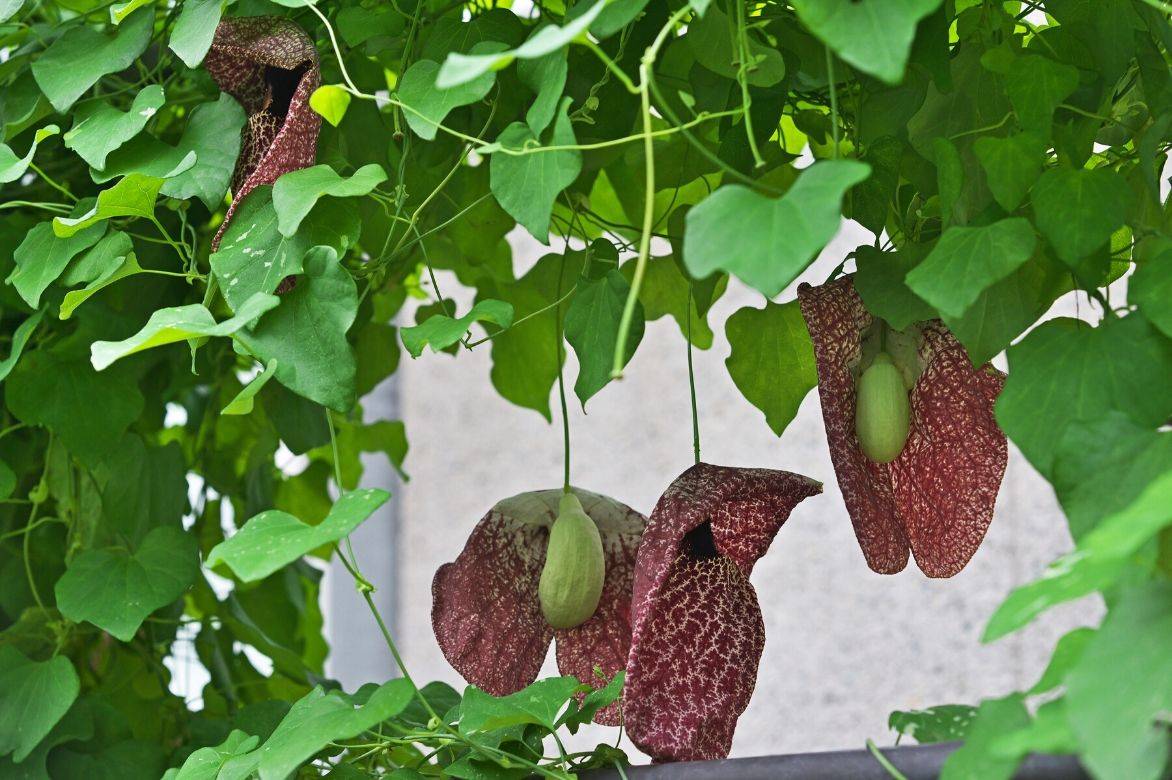
The curious flowers of Aristolochia gigantea and pod formation (rare in our climate)
Read also
10 climbing plants ideal for fencesMaintenance, pruning and care of Aristolochia
This liana should be watered during the driest periods of the year as the soil must remain cool. Water regularly and keep its base cool with groundcover perennials or mulch.
In spring, apply a good layer of compost by scratching it into the base to encourage growth.
Train the stems as they grow to help them cling to their support.
Protect the stump from severe frosts for plants grown in open ground. Read our tutorial on this topic How to overwinter Aristolochia?
Potted specimens need regular fertiliser and watering during the growing season. In winter, protect the pots or bring them indoors.
Pruning Aristolochia is only necessary to contain it, as it is a vigorous plant that sometimes requires growth limitation! At the end of winter, use a pruning shear to cut back any dry, thin, or dead stems at their base and shorten the branches by two-thirds. Also read How to prune Aristolochia?
It is not known to have any pests or diseases when the growing conditions are to its liking.
Multiplication of aristolochia
You can take stem cuttings in early summer.
- Take sections of semi-woody stems (turning to wood) with 2 or 3 nodes in mid-August
- Insert them three-quarters into a mixture of potting soil, earth, and sand, keeping it moist and spacing them 5 cm apart
- Place the tray or pot in a warm, humid environment
- Transplant them into the ground the following spring when they have sufficient roots
Pairing ideas
Aristolochia is a vigorous climbing plant that thrives well when grown in isolation. It alone creates a decorative, extremely ornamental green cloak. It can become a formidable competitor for neighbouring plants. With its lush foliage and unique flowers, it adds an exotic touch to any support provided. Its flowers in shades of plum and cream pair well with warm colours. It complements chartreuse foliage, such as ivy, hop, or purple vines, as well as the autumn hues of a Cotinus.
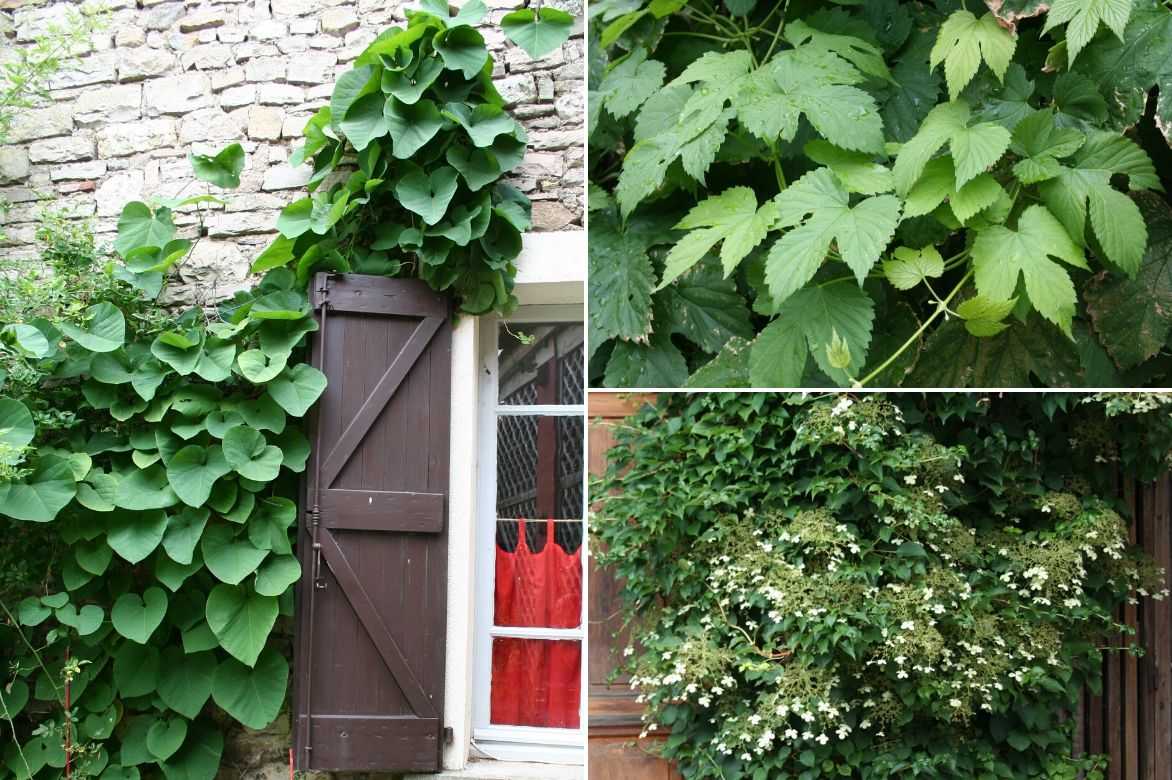
An idea for covering a wall: Aristolochia macrophylla, Hops, and Climbing Hydrangea
It makes for beautiful combinations with Clematis, where their voluble stems intertwine, or with Hydrangea petiolaris.
The Aristolochia clematitis with its small light yellow flowers pairs well in a very exotic-looking bed with perennials like Helianthus, Datisca, or Hemp perennial, or with shrub species like Tetrapanax and elderberries.
Useful resources
- Exotic liana enthusiasts, also discover our selection of original climbing plants to adorn walls, arbours, and pergolas!
- Propagating Aristolochia: our tips for success
- Subscribe!
- Contents
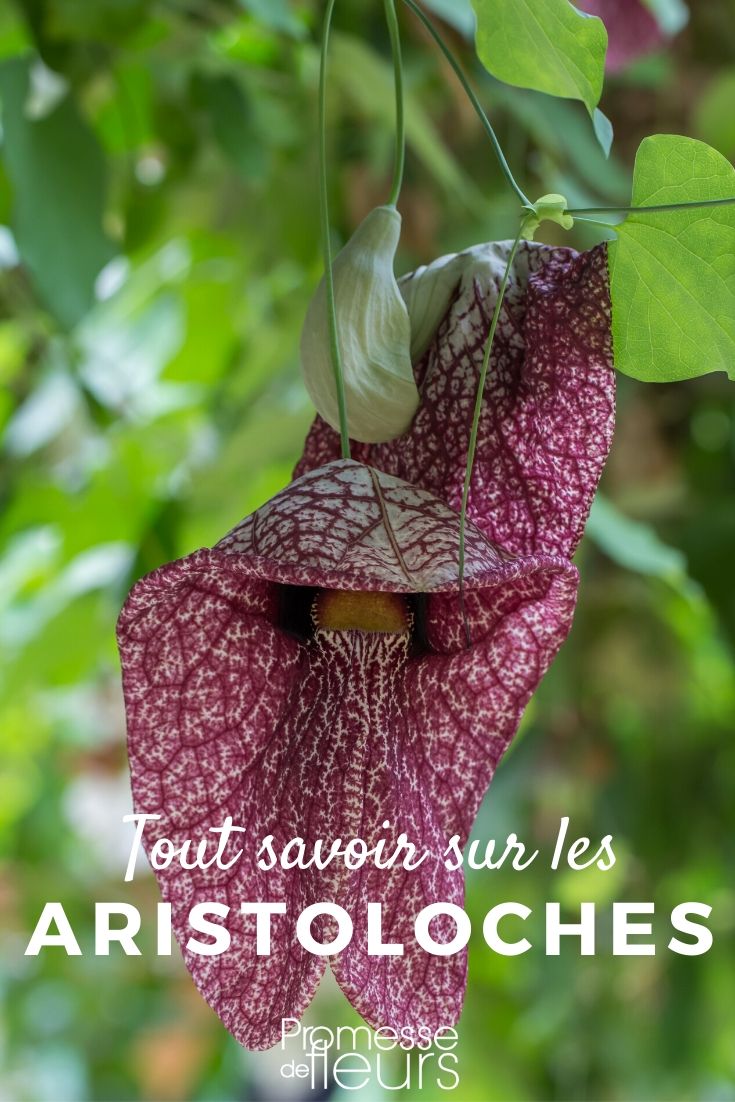

































Comments